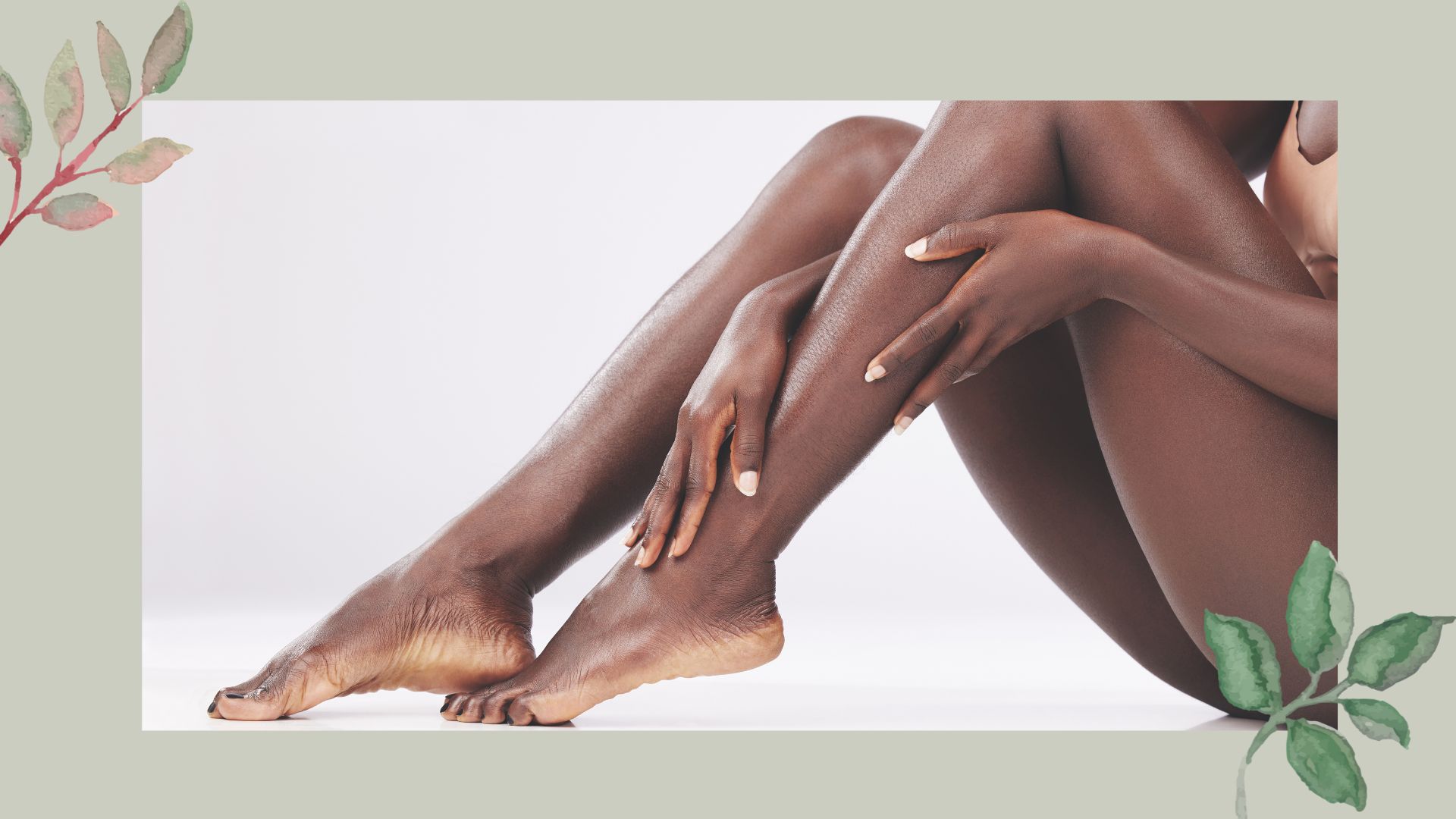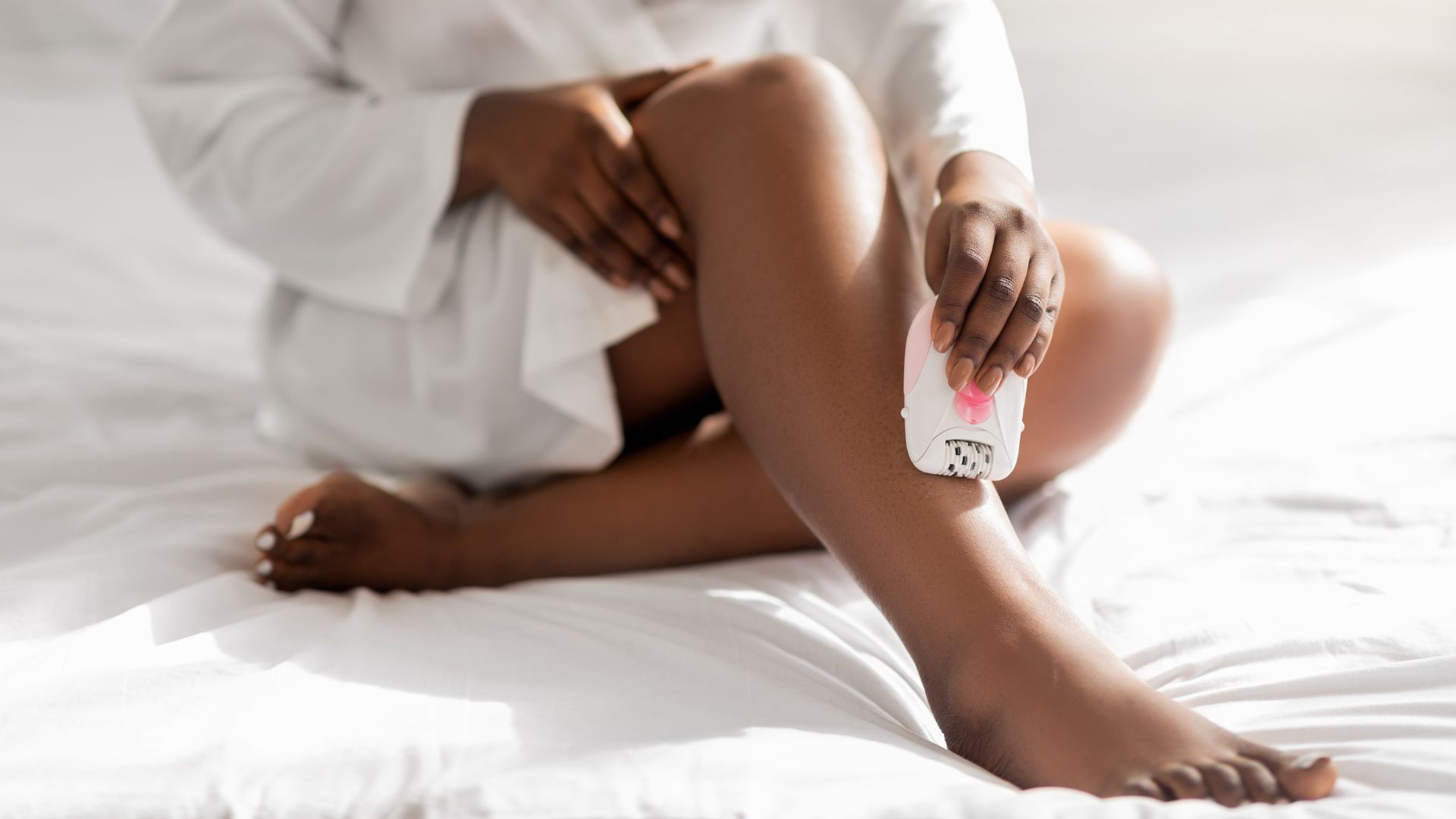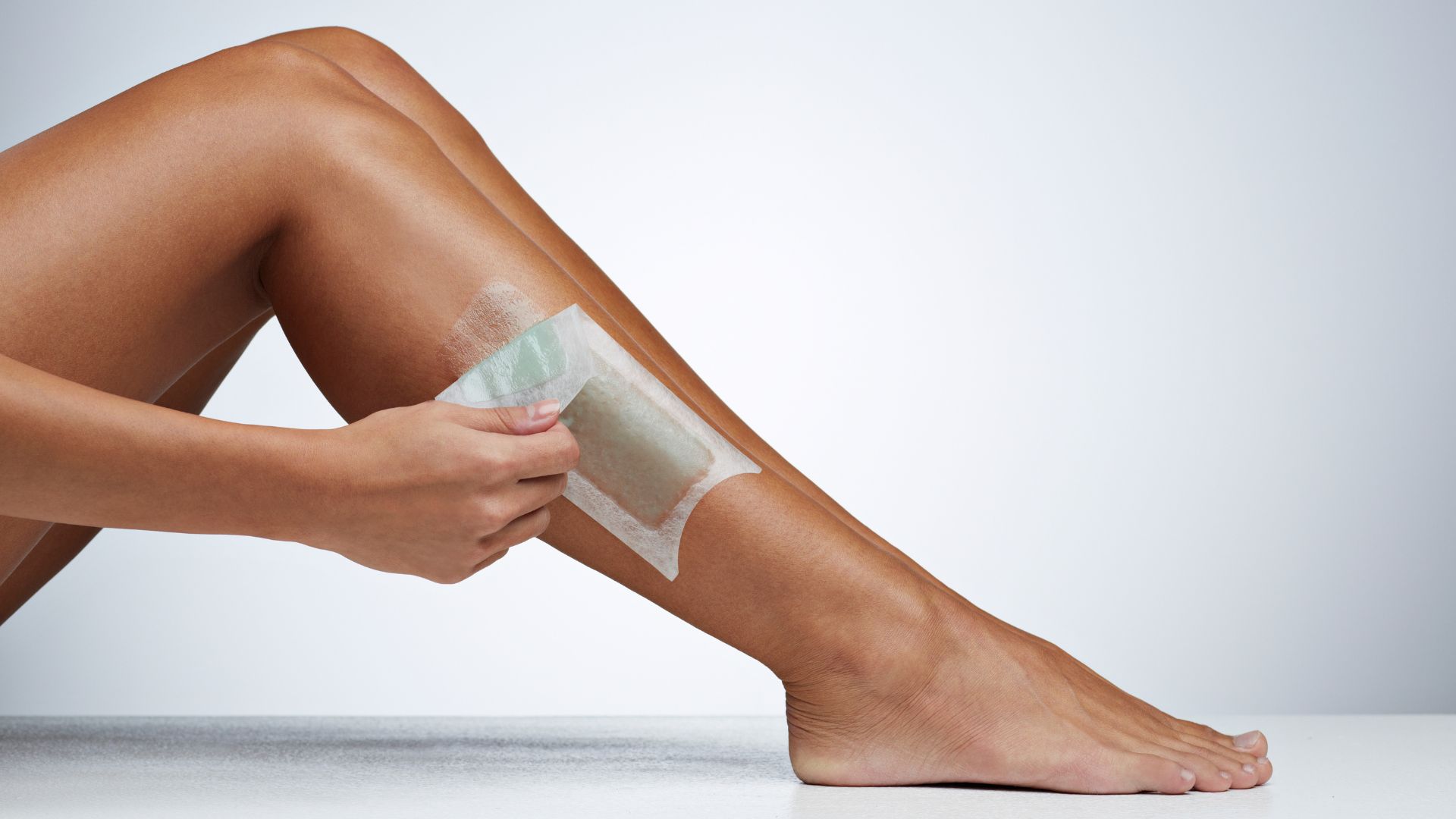Epilation vs waxing: which is best for lasting hair removal?
Torn over whether to use an epilator vs waxing? We've uncovered every pro and con, from price to convenience and potential for pain


Weighing up whether to use an epilator vs waxing your body hair? There are upsides and downsides to each.
Much as we loathe the expression, ‘no pain no gain,’ it really is apt when it comes to hair removal, such as using your best epilator or heading for an in-salon wax. There's no question that shaving is a shortcut to smoother skin, but the effects don’t last. You need to take more drastic measures - such as removing hair at the source with an epilator or wax strip - to see long-lasting results.
Plus, choose one of these long-game methods and you don’t need to worry about how to prevent razor burn either. But which is best for your needs?
Epilation vs waxing: Your expert guide
What are epilation and waxing?
“Epilating and waxing are two popular methods of hair removal that involve removing hair from the root,” explains waxing specialist Sarah Carswell, who adds that "there are benefits and drawbacks to each method.”
Epilation and waxing remove the entire hair, much of which is beneath the surface of the skin. That's why the hair that comes out looks longer and may have a bobble on the end (known as a hair bulb). As you remove the entirety of the hair, the results of waxing and epilating are longer lasting than shaving with even the best razors for women.
What’s the difference between epilation vs waxing?
Epilation and waxing remove hairs in different ways. Epilation is done via a machine that uses a tweezer-like mechanism to pluck out individual hairs. It works by gripping onto the visible part of the hair and pulling it out from the root. You’ll need a specific device for epilating and it is done at home.
Waxing works by adhering hot or warmed wax to the skin in the direction of the hair growth. The wax is allowed it to harden slightly before being pulled away in the opposite direction using a piece of fabric or specially-designed paper. Wax can come already attached to strips, or you can smooth them on after you have applied the wax. Waxing can be done in the comfort of your own home with DIY kits or performed by an expert in-salon.
Sign up for the woman&home newsletter
Sign up to our free daily email for the latest royal and entertainment news, interesting opinion, expert advice on styling and beauty trends, and no-nonsense guides to the health and wellness questions you want answered.
What are the benefits of epilation vs waxing?
Benefits of epilation

- Convenient: “Epilators are convenient and can be used at home,” says Carswell. All you need is your device – there’s no need to book an appointment, or nip to the shops for supplies.
- Cost-effective: After the initial outlay for your epilator, you don’t need to spend any more money on hair removal, or on travel costs to get to and from the salon. “Epilators can be more expensive upfront, but are more cost-effective over time as they don’t require ongoing purchases,” explains Carswell.
- Long-lasting: “The most notable benefit of epilation is that the hair will grow back slower and finer,” says Aesthetic Doctor Dr. Munir Somji. “Regrowth takes on average three to four weeks.”
- Mess-free: There’s no clearing up to be done post-epilation. Even so, we’d recommend sitting on a towel in case any excess hairs escape.
- Can be done anywhere: “There are epilators you can use in the shower,” says Dr Somji. This will not only help you utilize the time it takes for your best hair mask or best face mask to work its magic, but can make the process of epilating less painful too.
- Less likely to irritate: “Some people have very sensitive skin, and waxing can cause allergic or irritant contact reactions,” advises Dr Somji. “Whereas epilation is more mechanical and therefore less likely to cause the same kind of rash or reaction.”
Benefits of waxing

- You can go pro According to Carswell, being waxed by a professional will save you “lots of pressure, stress, pain, and time. The finish will be immaculate as your wax expert will double-check the areas and ask you to check too,” she adds. “You’ll achieve smoother skin for longer if a trained expert is in charge of your hair removal.”
- Long-lasting results: The results of waxing can outlast epilation, but won’t be as permanent as laser hair removal. “The length of time before hair regrowth can vary by individual and treatment area,” says Carswell. “On average, hair regrowth will occur in four to six weeks.”
- Can be cheaper: If you normally shave or don't remove your body hair, but want to for an occasion like a holiday, it’s not worth investing in an epilator. “Waxing will be cheaper initially,” advises Carswell. Waxing strips can be bought inexpensively from the drugstore, but these are unlikely to provide as smooth a finish as a professional treatment.
- You can wax anywhere: With epilation, the shape of the tool means there are limits to the areas you can remove hair. For example, with facial hair removal, you couldn’t epilate your upper lip with a tool made for the body. “It also wouldn’t be advisable to epilate the whole area of public hair,” says Carswell. “Whereas in salon Hollywood and Brazillian waxes are very popular.”
- Leaves skin soft: When you wax, you’re not just removing the hair, but also “clearing the skin of the top dead layer of skin cells,” says Dr. Somji. “So the skin appears refreshed as well.” Think of it as bonus exfoliation.
- Re-growth is finer: “The key benefit of waxing is slower regrowth with finer, softer hairs,” explains Dr. Somji. Over time, you may notice that you get less and less regrowth.
What are the negatives of epilation vs waxing?
Negatives of epilation
- You need to master the technique: “If you move the epilator too fast, or move the device against the direction of hair growth, then you may break the hair rather than pull it out from the root and these shorter, broken hairs may become Ingrown hairs or infected,” says Dr. Somji
- It’s painful: “Although both are moderate to intense pain, waxing is less painful than epilating,” advises Dr. Somji. That’s because the motion of waxing pulls large sections out in one swift movement, rather than slowly moving across the area which prolongs the discomfort.
- Initial expense: Epilators aren’t cheap (they start at around $50+/£50+) and you’ll need to splash out the entire amount in one go to get started.
- Not suitable for everyone: “Epilating may not be suitable for those with sensitive skin, as it can be painful and may cause redness or irritation,” explains Carswell. “It also may not be suitable for those with certain medical conditions, such as diabetes or varicose veins, as it can increase the risk of complications.”
Negatives of waxing
- It’s painful: “Nothing is pain-free if the hair is being removed by the root,” advises Carswell. “However, going to see a professional, qualified wax expert helps if you have sensitive skin or a low pain threshold. Over time, as they become less hairy and the skin and mind get used to the sensation of waxing, a lot of clients end up enjoying it."
- Not easy to DIY: “Waxing can be messy and time-consuming if you’re doing it yourself,” explains Carswell. “Waxing may also not be as convenient as preparation time is often needed for the wax,” adds Dr. Somji.
- Risk of in-growing hairs: “Ingrown hairs are a concern with any hair removal,” says Carswell. “Look for a wax expert who is qualified to remove ingrown hairs and give you advice.” Regular exfoliation with one of the best body exfoliators can help to keep them at bay.
- Ongoing costs: Waxing will need to be repeated around every four to six weeks, so buying at-home top-up kits or visiting the salon can quickly add up.
- Not suitable for everyone: “Waxing is suitable for most people,” says Dr. Somji. “However, if you’re taking certain antibiotics, hormone replacement therapy, hormonal birth control, Accutane, Retin-A, or any other retinol-based creams you may find that your skin is more sensitive than usual. Waxing may also not be ideal for patients having cancer treatment.” If that sounds like you, take a look at our guide to hair removal for sensitive skin.
- Can irritate: “Waxing done wrong can cause skin irritation, discoloration, burns, infections, and even allergic reactions,” warns Dr. Somji. “After treatment, your wax expert will apply a cream, gel, or oil to the skin to prevent infection and soothe your skin,” adds Carswell. “You will also receive aftercare advice to minimize redness after treatment.”
- Potential for embarrassment: No one should ever feel uncomfortable or embarrassed about their body, but even the most confident among us can bristle at the thought of a stranger waxing our intimate areas. Remember that your therapist will do a number of these kinds of treatments in any given day, and will be entirely unphased by your body.
Epilation vs waxing: w&h verdict
Ultimately, the results of using an epilator vs waxing are pretty much on par, so it’s all down to personal preference. Everyone feels pain differently, and some will find one treatment worse than the other. If the idea of short, sharp bursts of ouch sounds more tolerable to you than an ongoing pulling sensation then choose waxing over epilating. If it’s the other way around, opt for epilation. If you really can’t bear either one, consider comfier options like the best IPL hair removal devices instead.
Money comes into it too. Epilators are far more expensive than a packet of wax strips, but that initial outlay pays for itself quite quickly if you’re using it regularly rather than visiting the salon. Equally, if you’re shy, then you’ll probably prefer at-home epilation over in-salon waxing. There’s also no reason why you can’t mix and match the two treatments though, depending on how you feel when your re-growth arrives.
What skincare or body care ingredients should you avoid before epilating or waxing?
Whichever you decide in the battle of using an epilator vs waxing, the process of pulling hairs out of your skin is never going to be a barrel of laughs, but certain ingredients can make matters even worse. Retinoids and exfoliating acids like alpha and beta-hydroxy acids speed up the rate at which our skin turns over, sending the older cells (which can act as a sort of protective layer on the skin) packing faster than they would naturally. These ingredients are great for making the skin look younger and fresher but can bring increased sensitivity as part of the package.
“It is best to avoid using retinoids or other exfoliating agents on the skin for at least a week before epilating or waxing,” says Carswell. “Using retinoids before waxing or epilating can increase the likelihood of skin irritation, redness, and even peeling or blistering. [waiting a week] will give the skin time to recover and reduce the risk of irritation, redness, or damage.”
"Additionally, retinoids can make the skin more susceptible to damage from the sun, which can increase the risk of sunburn or other skin damage," Carswell adds. This point is especially important to note, as many people will undergo hair removal treatments ahead of summer or sunny holidays. To reduce the risk to your skin post-waxing or epilating, make sure your suitcase is packed with the best facial sunscreens and the best sunscreens for sensitive skin.
Jess Beech is an experienced fashion and beauty editor, with more than eight years experience in the publishing industry. She has written for woman&home, GoodtoKnow, Now, Woman, Woman’s Weekly, Woman’s Own and Chat, and is a former Deputy Fashion & Beauty Editor at Future PLC. A beauty obsessive, Jess has tried everything from cryotherapy to chemical peels (minus the Samantha in Sex and The City-worthy redness) and interviewed experts including Jo Malone and Trinny Woodall.
-
 Aldi's affordable bedding is actually made by my favourite sleep brand - it's got more than your duvet covered
Aldi's affordable bedding is actually made by my favourite sleep brand - it's got more than your duvet coveredAldi's Anti-Allergy Bedding has arrived in the middle aisle and it's more affordable than the best mattress toppers, duvets, and mattress protectors out there
By Laura Honey Published
-
 Unforgettable date ideas to make a great first impression or rekindle romance
Unforgettable date ideas to make a great first impression or rekindle romanceForget the same old first date formula - these unforgettable date ideas will leave them thinking about you long after you go home
By Natalie Denton Published